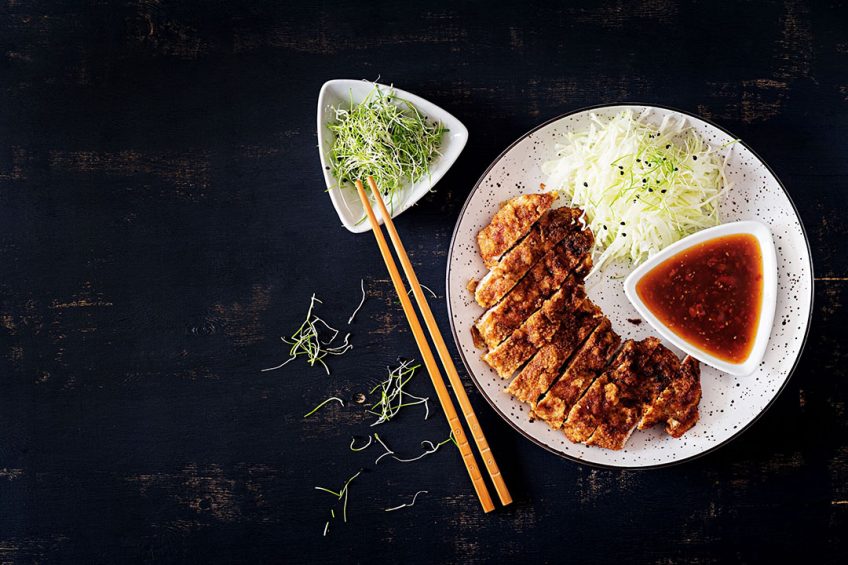Sluggish growth anticipated for Japanese poultry

Chicken meat production in Japan this year is projected to remain flat from 2020.
In Japan, an outbreak of avian influenza continues to put pressure on domestic production, while the effects of the Covid-19 pandemic slow the recovery in foodservice demand. Meanwhile, from 25 July 2021, Japan’s organic standards for livestock products will encompass turkey products. Official statistics for chicken production in Japan are not published, however, industry sources estimate that 2020 production grew about 2.4% from 1.723 mmt in 2019 (bone-in product basis) to 1.765 mmt. Production in 2021 is anticipated to remain flat, reports a USDA GAINS report.
Avian influenza outbreak
Highly pathogenic avian influenza (HPAI) continues to put pressure on domestic production volumes, and the number of broilers culled due to HPAI between November 2020 and February 2021 totalled 1 million heads, accounting for 0.7% of the total population. Some industry sources project 1% production growth in 2021, while the USDA’s Foreign Agricultural Service anticipates production will remain flat due to weak growth in chick production. The HPAI outbreak in Japan has disproportionally affected the layer population. About 9 million layers have been culled thus far, which accounts for 5% of the overall population. As layers typically account for around 10% of Japan’s chicken slaughter, this could put additional pressure on chicken supply this year.
Avian influenza
Avian influenza is an issue for poultry producers worldwide. With this interactive map, Poultry World tracks the outbreaks and keeps you up-to-date on the latest information. Check it out…
Slight increase in price of feed
Feed prices for layers and broilers have risen slightly since October 2020 but remain at roughly the same level as the first half of 2020. It is not anticipated that this will have a significant effect on chicken production.
Poultry imports replace domestic chicken
Chicken consumption in Japan in 2021 is projected nearly flat from 2020. Strong household demand is expected to continue; however, domestic prices are rising and may result in imports replacing domestic chicken on retail shelves.
Increasing popularity of fried chicken
It is reported that following an early boost in home-meal cooking during the pandemic, consumers are increasingly turning to prepared/processed and take-out foods. Fried chicken sales are increasing – KFC, the largest fried chicken chain in Japan, reported a 7.6% year-on-year sales increased in February 2021. On sustained strong demand, industry sources project that boneless leg prices will remain high in 2021. Breast meat prices are projected to grow in the first half of 2021 before falling in the second half. Higher prices are expected to push processors to use more imported chicken. Convenience stores are already major users of imported prepared chicken.
KFC launches chicken-free chicken burger
KFC Malaysia has launched its Zero Chicken Burger, a plant-based and meatless burger that promises the flavour of Colonel’s secret recipe of 11 herbs and spices, but which has no chicken.
Poultry processors to use more imported inputs
Chicken imports for 2021 are projected at 1.010 mmt, which is 0.5% up from 2020. Weak foodservice demand during the Covid-19 pandemic saw a 7% decrease in Japan’s chicken imports. Prepared chicken imports, particularly, from Thailand and China, the 2 main suppliers, fell on reduced demand from izakaya pubs and other restaurants operating on shorter business hours. It is anticipated that foodservice demand will begin to pick up again in the second half of 2021 as pandemic concerns begin to ease. The higher price of domestic chicken is also likely to incentivise processors to use more imported inputs. This contrasts with a trend from several years ago when processors preferred low-priced, underutilised domestic breast meat.
Covid-19: Impact on the global poultry sector
The coronavirus has had a huge impact on daily life from the man on the street to businesses. And the poultry sector, even more essential than ever, has not gone unscathed. Keep up-to-date.
Japan to enforce organic regulations for turkey
In 2001, Japan’s Ministry of Agriculture, Forestry, and Fisheries (MAFF) established organic standards for livestock products. Turkey products were, however, outside of the scope of these standards. In response to Japan’s growing consumption of turkey products, MAFF decided to expand the scope of its livestock organic regulations to turkey products distributed in Japan. On 9 July 2020, Japan notified the proposed regulatory change to the WTO. It is reported that on 25 January 2021, MAFF stated that Japan will begin to enforce organic regulations for turkey products from 25 July 2021 after a 6-month transition period. The scope of the US-Japan organic equivalency arrangement expanded in July 2020 includes organic turkey products. Therefore, US organic turkey certified under the National Organic Program (NOP) will remain eligible to access the Japanese market as “organic” from 25 July 2021.












